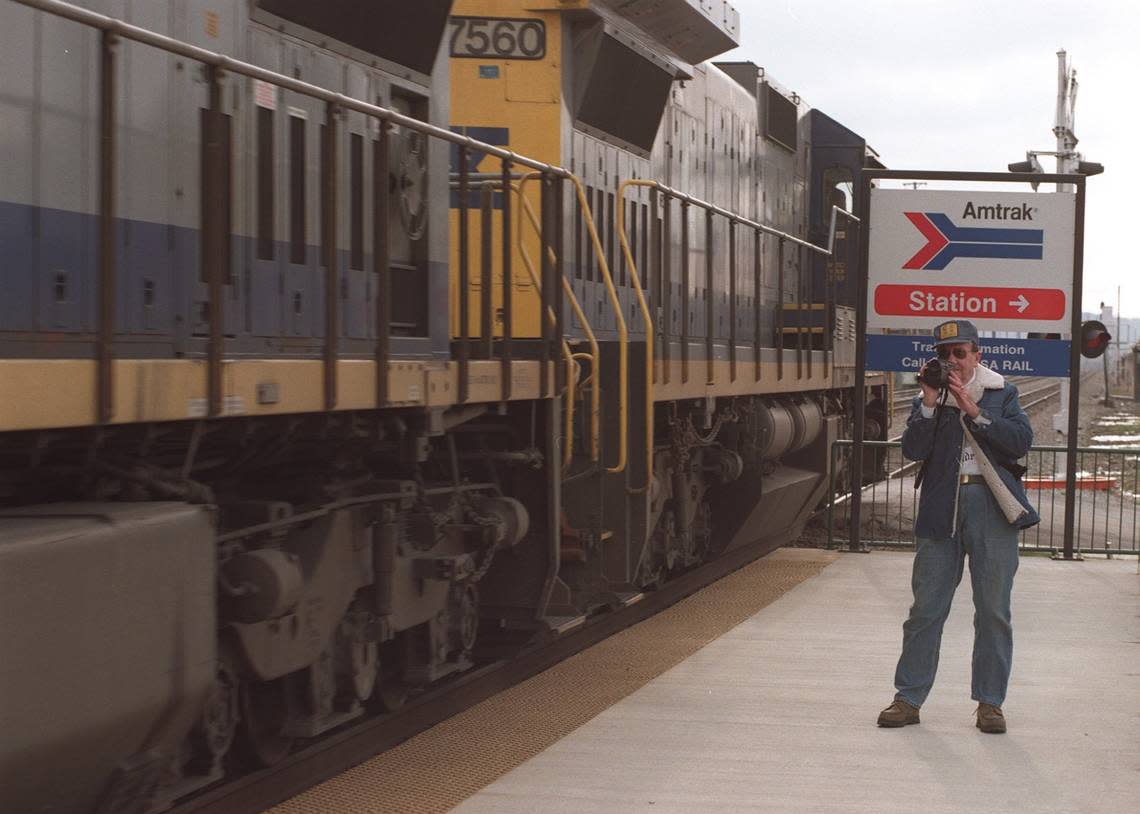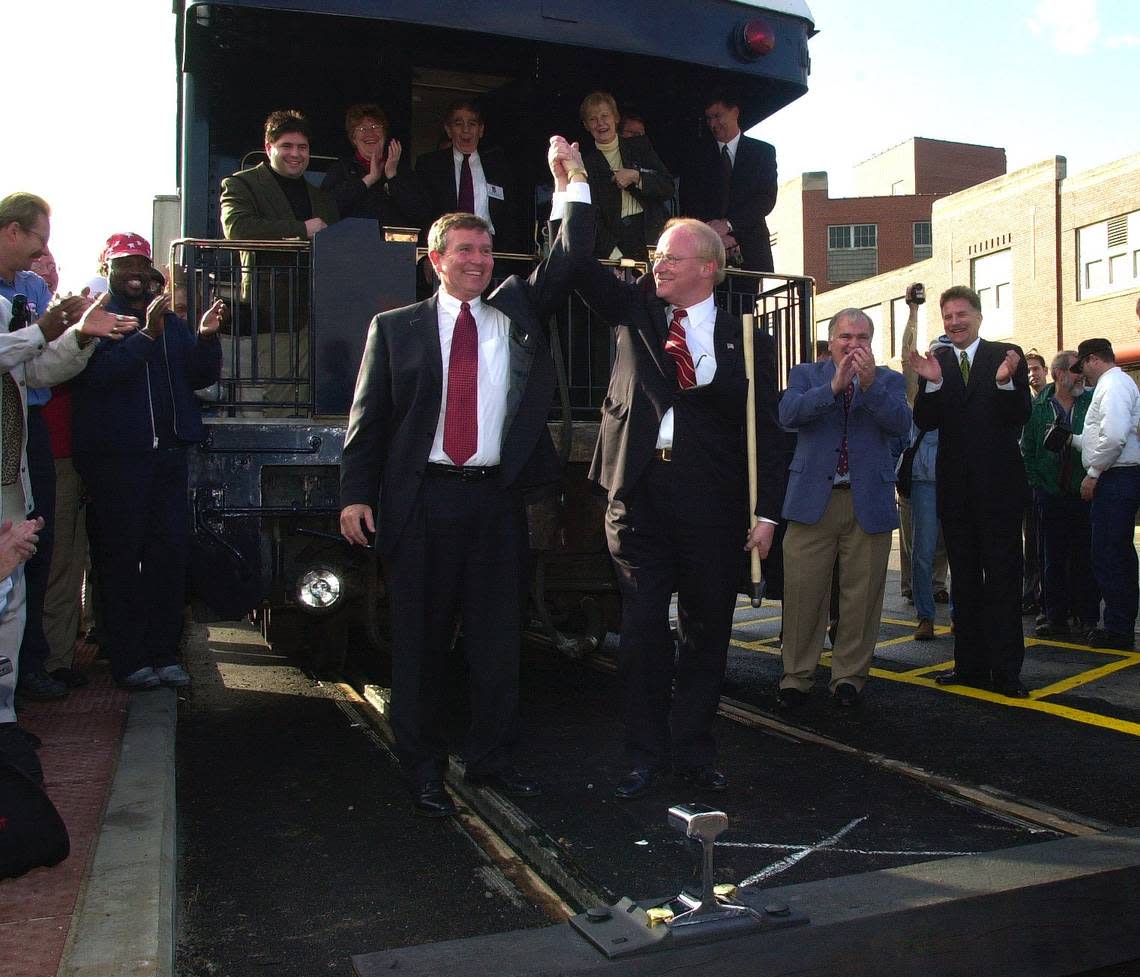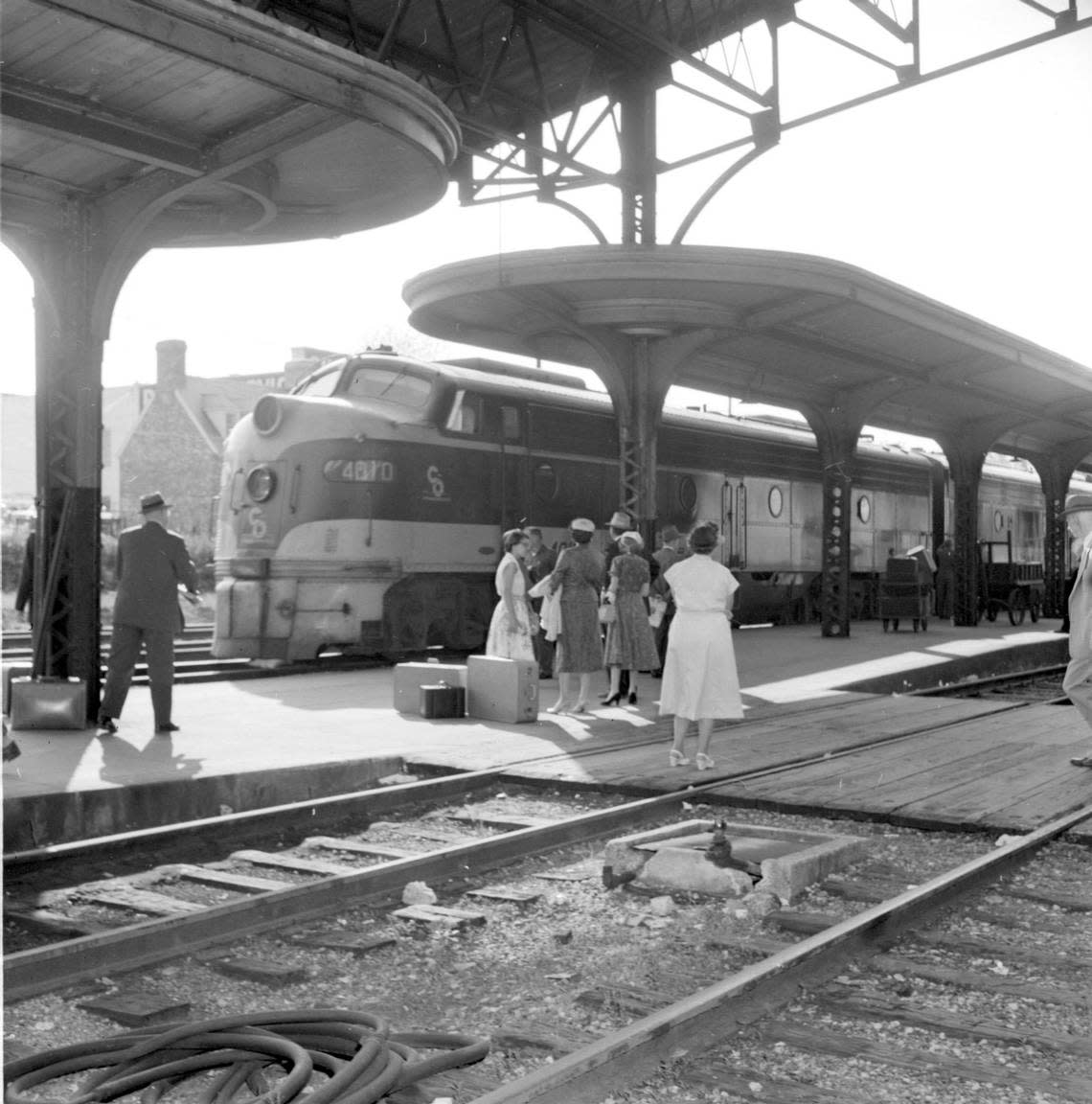C’mon Kentucky, do the loco-motive and get some more passenger rail in the state | Opinion
During one summer in middle school, I went on a trip to Washington D.C. with my parents and aunt. Now this was all organized through a local travel agency where they handled the transportation, accommodations, tours of things, etc.
The first leg of the trip involved getting to Washington D.C., arguably the most important part of the whole affair. It was at this point I boarded my first train in the early morning hours at the Amtrak station in Ashland — it is a high I have been chasing after ever since.
Maybe it was a general childlike wonder that amazed me so, or maybe it was seeing the natural beauty of West Virginia—the kind that’s difficult to see by car and near impossible up in the air. I felt the same amazement when traveling by train along the breathtaking coast of Wales later in life, so it’s a wonder that’s not solely limited to childhood.
My train bug subsided for a bit after the D.C. trip, largely because by the time I came into this world, most of the passenger rail that existed in Kentucky was defunct or heading out the door.
CSX Transportation ate up the Louisville and Nashville (L&N) railroad, along with all of its sprawling predecessors, in the 1980s, the Chesapeake & Ohio Railway which ran through Lexington’s Union Station ended in 1957 and Amtrak’s Floridian route, which ran through Louisville and Bowling Green, was discontinued in 1979.
Today if you’re looking for passenger trains, excluding scenic railways, dinner trains and the like then you’re mostly out of luck–except if you live near the four Amtrak train stations in the state, three of which are congregated in northeastern Kentucky (Ashland, South Portsmouth and Maysville), with the fourth being in Fulton.

Now there’s been some movement on the railroad front with President Joe Biden making billion-dollar investments in passenger rail across the country; while at the same time sticking it to railroad workers who were looking for paid sick leave.
The U.S. Department of Transportation’s Federal Railroad Administration (FRA) recently announced $8.2 billion in grants for 10 passenger rail projects across the U.S., including corridor planning activities.
There are two things in this latest announcement of benefit to Kentuckians: proposed improvements to the already existing Amtrak Cardinal service, increasing frequency from three days a week to daily, and a proposed rail corridor connecting Louisville to Indianapolis.
Connecting Louisville with Indianapolis by rail would mean having a connection to Chicago, Cincinnati, New York City, Boston, etc., etc. It’s exciting! It’s also not new and not exactly bold.
The Kentucky Cardinal takes flight

Louisville had passenger rail that went up through Indianapolis to Chicago via the Kentucky Cardinal route. That route was discontinued in 2003 after a few short years, so all this announcement really does is revive something we once had.
In fairness, the Kentucky Cardinal had its share of problems. Amtrak cited low ridership as the reason for discontinuing the line, according to Associated Press reports from the time, plus the sluggishness of the service itself.
The train couldn’t go any faster than 30 mph and took roughly five hours to make the 120-mile trip due to rough tracks. It would’ve taken some $40 million to replace the 50-year-old tracks at that time, the AP reported.
Over time, the train eventually became a one-coach car with no sleepers or food service to speak of for a trip that was difficult to justify given Louisville’s own airport and proximity to major highways.
It can be argued Amtrak never had passenger rail as its priority when it brought about the Kentucky Cardinal. The implementation of the Kentucky Cardinal was part of Amtrak’s Network Growth Strategy (NGS) that came about at the turn of the 21st Century.
Facing financial hardships, the NGS was meant to boost revenues by expanding from passenger services into Mail and Express by shipping mail in conjunction with the U.S. Postal Service. That venture was discontinued in 2004.
A 2002 U.S. Government Accountability Office report found the NGS plan was a failure; in part because Amtrak lacked an empirical basis for its revenue estimates for this strategy and their inability to reach agreements with freight railroads.
Just blowing steam?
With the potential revival of the Kentucky Cardinal route, albeit more in spirit than in name, how does this bode for the prospect of passenger rail in Kentucky?
Both Lexington and Louisville have flirted with light rail proposals in the past. Ralph Tharp preached a gospel message of a passenger rail line that would run between Winchester and Louisville, with stops at Lexington, Midway, Frankfort and Shelbyville.
Tharp, the former executive director of the Kentucky Capital Development Corp., envisioned the Thoroughbred Rail Link. A route that would see one train starting from Louisville and heading east, the other starting west from Winchester, traveling along the already existing lines owned by CSX.

Even the state at one point examined the possibility of a high-speed rail corridor between Lexington, Louisville and Covington — riding the rails along Kentucky’s Golden Triangle!
Many of the possibilities that come with passenger rail seem to be deflated by a dearth of political will and a lack of needed funding. This is not a cheap venture, that much is a given, but then again what is anymore?
Listen, I’m aware much more has to go into things like this then just saying you’re gonna do it and getting it done. Right-of-way acquisition, infrastructure improvements, safety considerations and a slew of other things go into these large-scale projects.
I am not an engineer, nor would I ever profess to be; however, what I am is a man asking: what’s a guy gotta do to get some more trains running around this fine commonwealth of ours?
If political will is the issue then let me tell you here first: do it. Do a study, have a meeting with your constituents, whatever you need to do to get the wheels greased up on the political machinations of this then you do it. You have my permission, nay my blessing.
Worried about money? I hear the state has a pretty well-off rainy day fund at the moment; plus the federal government seems keen on moving these projects full-steam ahead. Also consider all the things federal, state and municipal governments spend money on that are of no material benefit to people.
From what I’ve seen online and heard from folks, is that passenger rail is something people actually get excited about! It’s one of the very few things a government could fund and maintain that people don’t actively hate–wouldn’t that be something?
Travel agent and writer Gene Poon, writing on the online train forum “All Aboard Rail Discussion,” lamented the slow, inevitable death of the Kentucky Cardinal. Writing in part: “Will Louisville have to wait another twenty years to see service again, as it did after the Floridian was discontinued? Or will it never happen again?”
Gene’s oddly prescient clairvoyance aside, it’s worth asking: Will it happen again? Do we have it in us to imagine even bolder plans for the future of American travel and interconnectedness? Perhaps so, or perhaps I’m just spinning my wheels.
